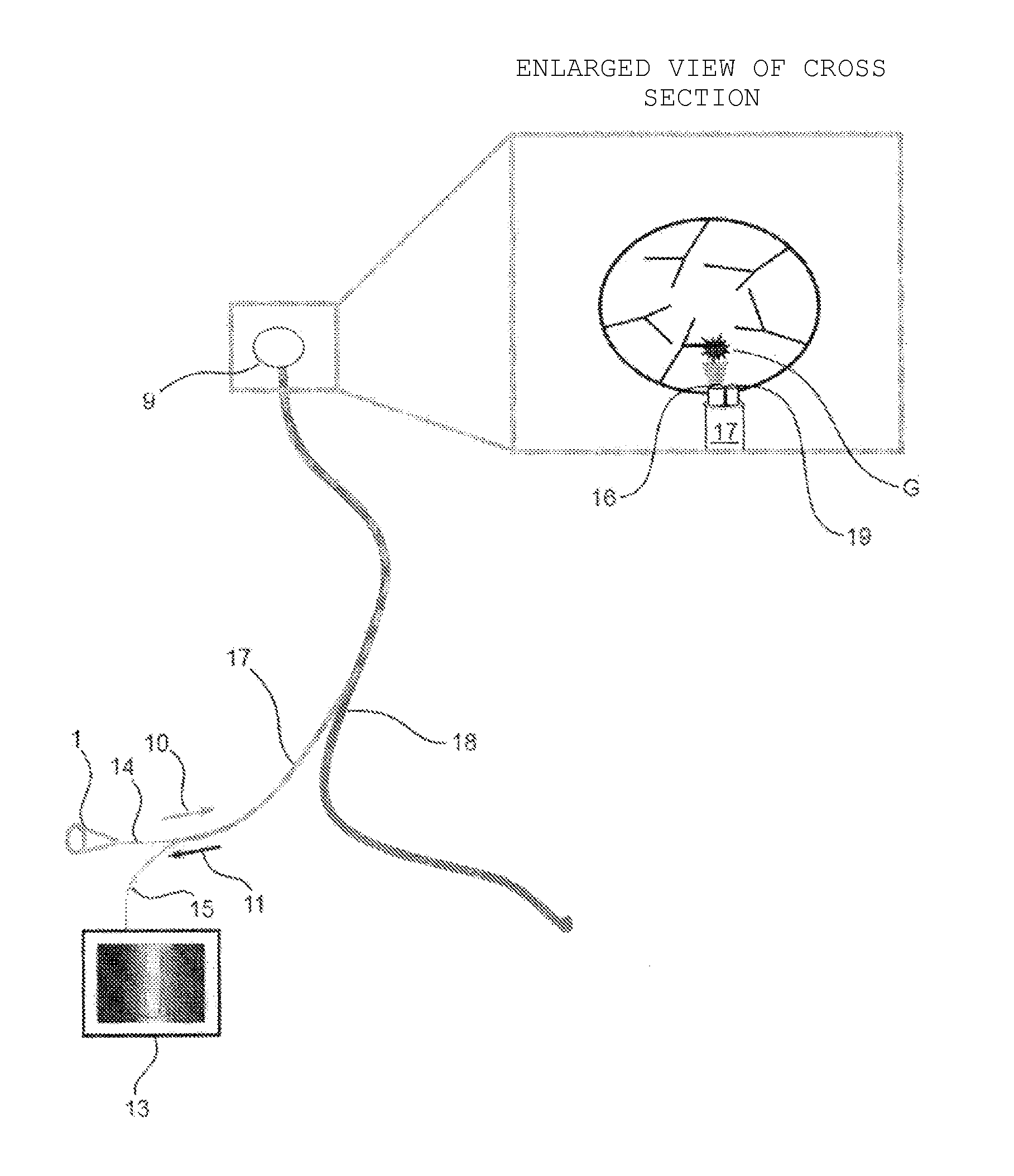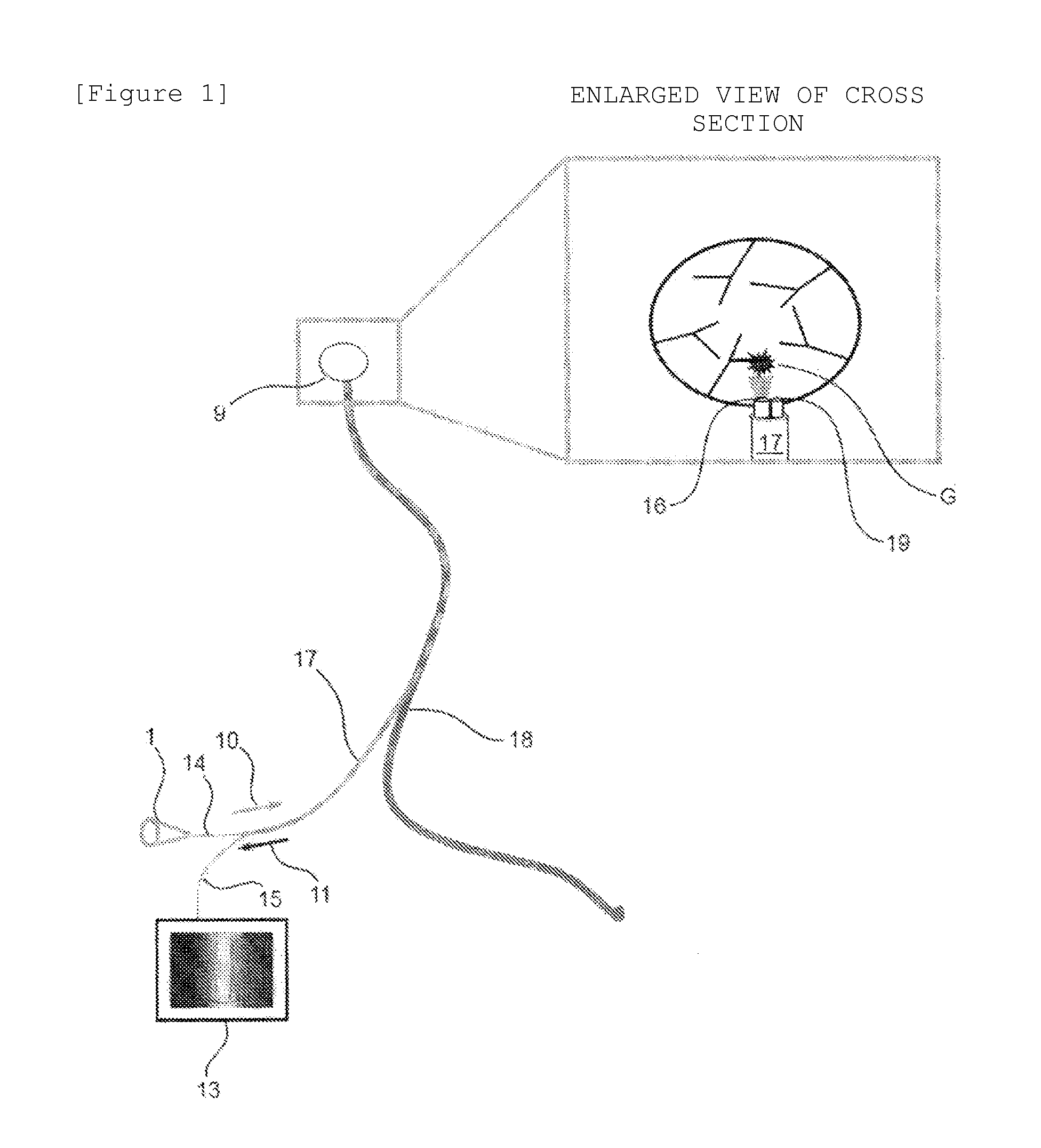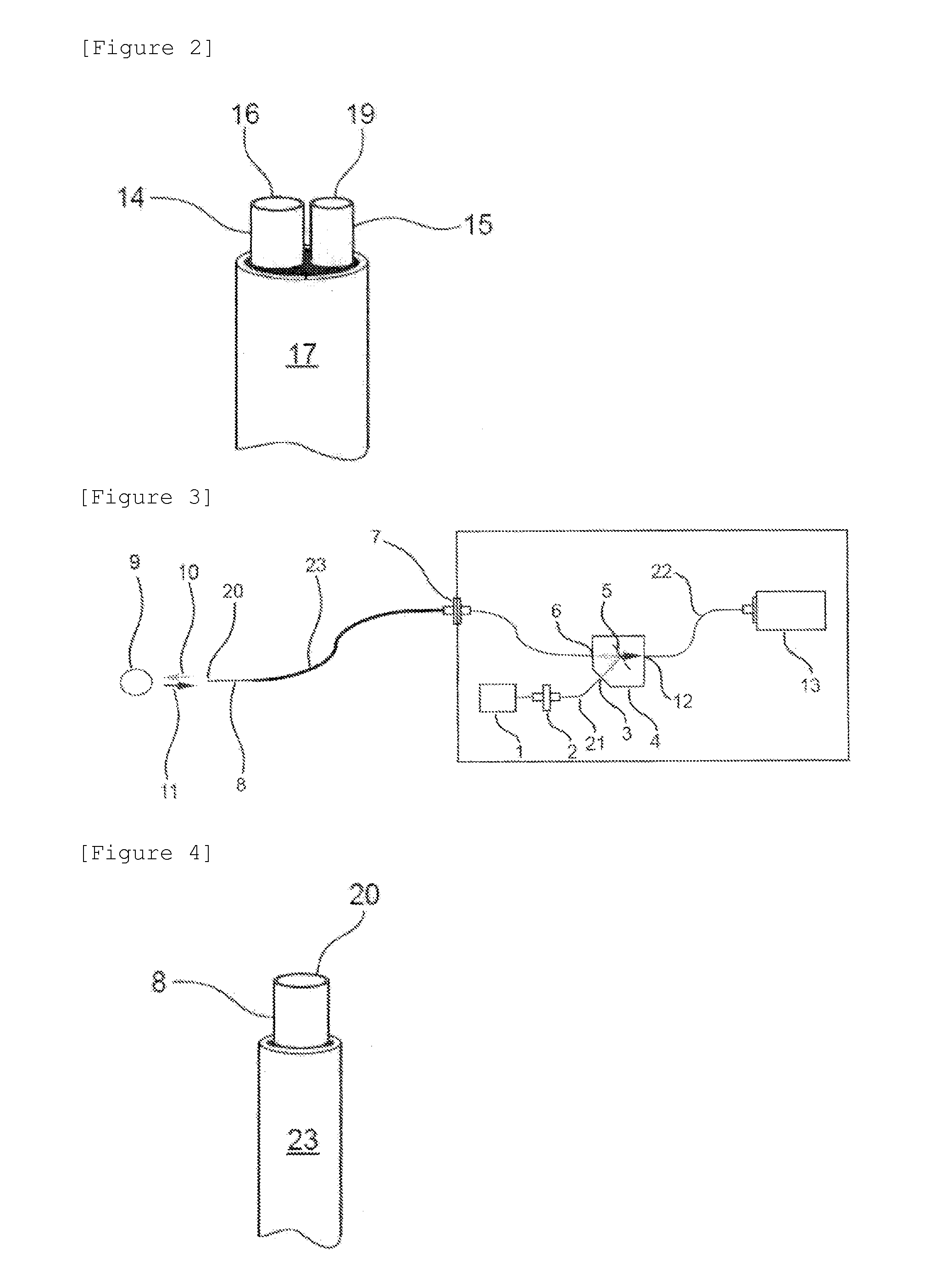Device for determining metastasis of cancer to sentinel lymph node
a technology for lymph nodes and metastases, which is applied in the field of devices for determining the presence or absence of cancer cell metastasis in sentinel lymph nodes, can solve the problems of low accuracy of determination, insufficient basis, and decreased qol of patients receiving axillary lymph node dissection, etc., and achieves low invasiveness and high patient comfort.
- Summary
- Abstract
- Description
- Claims
- Application Information
AI Technical Summary
Benefits of technology
Problems solved by technology
Method used
Image
Examples
first embodiment
Device I (1)
[0068]As shown in FIGS. 1 and 2, a hollow tube 17 into which a small-diameter optical fiber for launching light 14 and a small-diameter fiber for receiving light 15 are inserted passes through an afferent lymph vessel 18, and the small-diameter optical fiber for launching light 14 can guide excitation light 10 output from a light source section 1 to a launching end 16 to launch the excitation light from the launching end 16 to a sentinel lymph node 9. Reflected light, autofluorescence, and fluorescence from a photosensitizing substance 11 from cancer metastasis G in the sentinel lymph node 9 generated by irradiation with the excitation light are received by a light-receiving end 19 of the small-diameter optical fiber for receiving light 15 and enter the measuring section through a spectroscope 13 on which an excitation light cut filter is mounted.
second embodiment
Device II
[0069]As shown in FIGS. 3 and 4, the excitation light output from the light source section 1 is optically connected to the light-output end of an optical fiber for outputting light 21 through a connection adaptor (1) 2. When the excitation light arrives at a light mixing / separating 3-port module 4 through a reflection port 3, the excitation light is reflected by a band reflection / transmission mirror 5; the reflected excitation light is guided to a small-diameter optical fiber for launching-cum-receiving light 8 inserted into a hollow narrow tube 23 passing through the lymph vessel through a common port 6 and a connection adaptor (2) 7; and the excitation light 10 is launched from a light-launching-cum-receiving end 20 towards the sentinel lymph node 9. The light 11 generated at the sentinel lymph node is received by the light-launching-cum-receiving end 20 and guided to the light mixing / separating 3-port module 4; the excitation light is reflected by the band reflection / tra...
PUM
 Login to View More
Login to View More Abstract
Description
Claims
Application Information
 Login to View More
Login to View More - R&D
- Intellectual Property
- Life Sciences
- Materials
- Tech Scout
- Unparalleled Data Quality
- Higher Quality Content
- 60% Fewer Hallucinations
Browse by: Latest US Patents, China's latest patents, Technical Efficacy Thesaurus, Application Domain, Technology Topic, Popular Technical Reports.
© 2025 PatSnap. All rights reserved.Legal|Privacy policy|Modern Slavery Act Transparency Statement|Sitemap|About US| Contact US: help@patsnap.com



